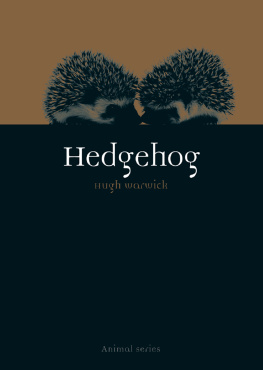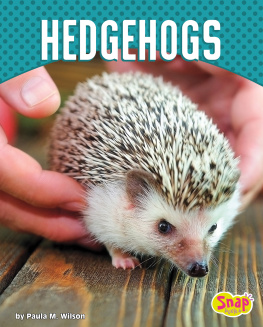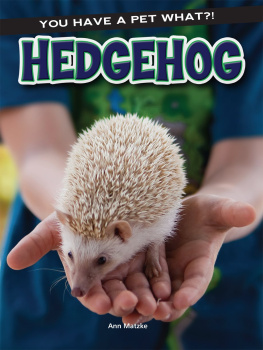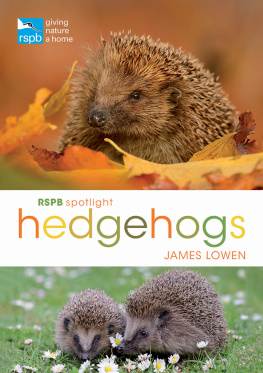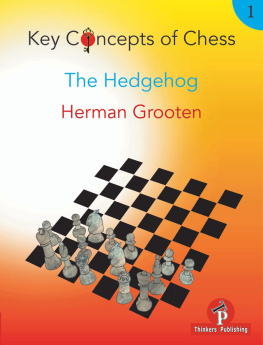What is a Hedgehog?
Few mammals are as immediately identifiable as the hedgehog. The defensive coat of spines certainly makes the job of identification simpler but it is not unique. In fact, there are many animals which protect themselves with similar prickly defences.
The most frequent error people make is to assume that a relationship exists between the porcupine and the hedgehog. The porcupine is a rodent, from the mammalian order Rodentia, which contains, for example, rats, mice, squirrels and beavers. In contrast, the hedgehog is of the order Eulipotyphla, recently placed there after the order Insectivora, under which it had previously been classified, was abandoned (Insectivora had, for generations, been used as a taxonomic dumping ground for many small, relatively unspecialized, primitive-looking insectivorous mammals that did not seem to fit anywhere else.) Porcupines are also much bigger than hedgehogs and, to be honest, look nothing like them.
Other spiny mammals exist too: mice and rats. The mice, of the genus Acomys, are not as well protected as the hedgehog; they have rather robust guard hairs rather than a coat of prickles. But this gives an indication of the origin of spines they are simply modified hairs.
Far more hedgehog-like than rats, mice and porcupines are the tenrecs. Confined to Madagascar and the Comoro Islands,the two species have names that suggest similarity: the lesser hedgehog tenrec, Echinops telfairi, and the greater hedgehog tenrec, Setifer setosus. These do indeed look more hedgehog-like, at first glance anyway, although on closer inspection they are very different: the tenrecs spines extend to cover its broad tail, unlike the hedgehog whose tail is short, slightly hairy and spine-free.

Hedgehogs and porcupines are very different creatures, and even when the illustrations look nothing like what they are supposed to, the differences are clear. It is possible that Joannes Jonstonus, who put together the Historiae naturalis libri in 1657, had never set eyes on either beast.
The tenrecs are also more arboreal than the hedgehog, spending time in trees as well as on the ground. And while they have some capacity to defend themselves in the typical hedgehog manner by rolling into a ball, they do not have the same specialized musculature that enables the hedgehog to maintain such an effective defensive posture. Additionally, tenrecs are cloacal: the anus and the urogenital tracts share a single opening, a feature more commonly found in birds, reptiles and amphibians.
Finally there are the echidnas, also known as spiny ant eaters. These are a class apart, being monotremes egg-laying mammals from Australasia. Along with the duck-billed platypus, theyare the only mammals to lay eggs. They look rather different to hedgehogs; they are stocky, strong-limbed and have distinctive snouts. The short-beaked echidna, for example, is much larger than the hedgehog at up to 45 cm long and weighs up to 5 kg. They are also thought to be the hosts of the worlds largest flea Bradiopsylla echidnae which is 4 mm long.

A lesser hedgehog tenrec (Echinops telfairi), endemic to Madagascar, displays many hedgehog-like characteristics, while being a very different sort of mammal.
Hedgehog spines, like the spines that cover all the animals mentioned above, are modified hairs. In the hedgehog they look like magnified hairs, with a bulb embedded into the skin, and a thin section starting as the spine emerges from the skin that is slightly angled and then broadens out before tapering to a sharp point at the tip. Among the spines across the back of the hedgehogs, there are no ordinary hairs, and the spines do not extendbeyond the crown of the head and the base of the tail. On the flanks the spines seem to reach the ground when the animal is still but it becomes clear that there is a skirt of spines that is lifted, revealing surprisingly long legs, when quicker locomotion is required; in fact, the hedgehog can reach speeds of up to 9 km an hour, the equivalent of a brisk human walk.
Hedgehog spines are made of keratin; they are modified hair. The slight curve at the base aids their function as shock absorbers. |

